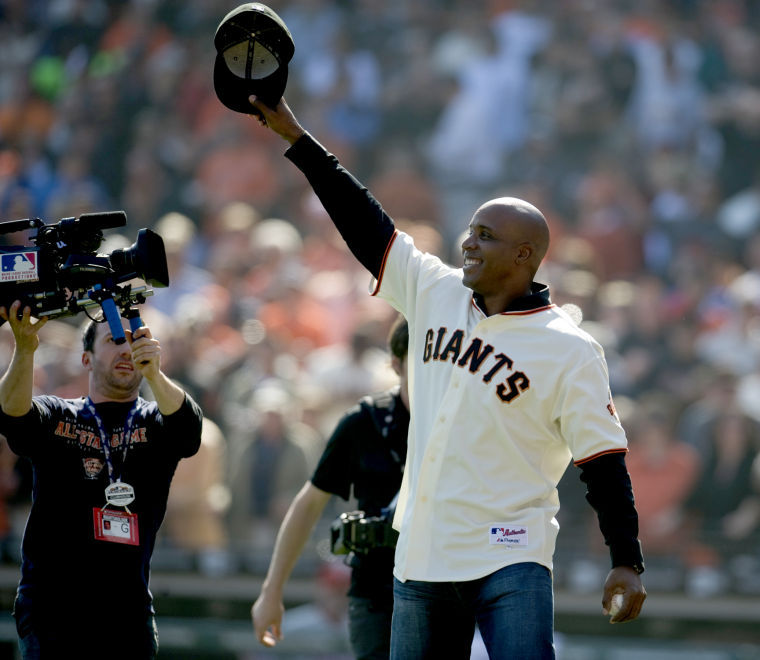Column: Baseball’s Hall of Fame enshrinement system needs fixing
January 8, 2014
In sports, there are currently many ways in which the democratic voting process is poorly used.
Look at the Associated Press Top 25, or the much-maligned Coaches Poll in college football.
But worse than all of these is a system that is not only broken, but catastrophic to baseball, a game that has arguably the best Hall of Fame in all of sports and is considered “America’s pastime” by historians and sports writers, alike.
Broken, because players such as Barry Bonds, Mike Piazza, Mark McGwire and Sammy Sosa are not enshrined within its walls.
The Major League Baseball Hall of Fame dates back to 1936, the year the museum welcomed its inaugural class, which included all-time greats including Babe Ruth, Walter Johnson, Ty Cobb, Christy Mathewson and Honus Wagner.
Since 1936, a total of 306 players, managers, writers, umpires, owners, broadcasters and executives — including 2014 elects Joe Torre, Tony La Russa, Bobby Cox, Greg Maddux, Frank Thomas and Tom Glavine — have been elected.
And over the years, there have certainly been some memorable “snubs” for various reasons.
Whether it’s “Shoeless” Joe Jackson or Pete Rose being banned from Hall of Fame consideration due to the character clause of the Hall’s election rules — which states players should be voted in based on “record, playing ability, integrity, sportsmanship, character and contribution — or guys like Jack Morris, Tim Raines, Piazza, Craig Biggio and Don Mattingly.
The “steroid era”, which lasted from 1996 to 2011, has forever tainted the perception of players who played during that time because of the widespread usage of performance-enhancing drugs, or PEDs.
As someone who grew up during that time, my first memories include the home run race between McGwire and Sosa — both of whom were candidates on this year’s ballot (Sosa received 41 votes, while McGwire received 63); Piazza’s home run in the first game played in New York after the Sept. 11 attacks, and Bonds’ 756th home run in 2007.
Coincidentally, these three were not only all-time great players, but were also snubbed on this year’s ballot.
The two players that arguably saved baseball after one of the worst lockouts in the history of sports — McGwire and Sosa — received a combined 104 votes.
While this is due in large part to connections to PEDs, the argument can and should be made that these are two of the best players of all time.
The best-hitting catcher of all time, Piazza received just 355 votes (74 votes short), while Craig Biggio, a member of the 3,000-hit club and a player who scored 100 runs in a season eight times and stole 30 bases in a season five times, missed being elected this year by two votes.
In addition to Piazza and Biggio, Roger Clemens — who totaled 4,672 career strikeouts (which is the third-most of all time), 354 career wins and seven Cy Young Awards — and Bonds — who hit 762 career home runs (which is the most of all time), totaled 2935 hits, maintained a .298 career batting average and earned a record seven MVP awards — received the same treatment.
While the six players listed above are suspected of PED use, one thing cannot be denied: Bonds, Piazza, Biggio, Clemens, Sosa and McGwire are among the best players to ever play their respective positions, and as such, need to be inducted into the Hall of Fame.
Back in 2008, I made my first and only visit to Cooperstown, N.Y., to visit the Baseball Hall of Fame. As I walked up and down the halls of the hallowed institution, a thought came to me: What is the Hall of Fame going to look like in 10 years? How about 15 years, or even 20 years? Will Barry Bonds make the Hall of Fame?
In the six years that have since passed, the picture is starting to become much clearer.
It was obvious last year when the writers failed to vote anyone into the Hall of Fame for just the third time since 1970, due in large part to the ballots consisting of mostly steroid-era players such as Sosa, Bonds, Clemens, McGwire and Piazza.
When people discuss players like Bonds and Sosa, they talk about putting black marks on their plaques, or putting asterisks in the record books.
But to me the answer is simple.
Make a special wing in the small, three-floor museum in Cooperstown where all of the players (whether there were suspicions or not), who played in the steroid era and get elected will be mentioned.
This exhibit can include videos, demonstrations and presentations not only on the players’ careers, but also on PEDs and the dangers of using these drugs. This way, some of the greatest players of all time and of this generation can be featured in baseball’s most hallowed halls.
It needs to happen, not for the generation growing up now, but for the generation that is to come. They need to learn about the greatest home run hitter of all time, the best-hitting catcher of all time and even one of the best power pitchers of all time.
And as I look ahead toward 2015, 2016 and beyond, the 571 most scrutinized people in America right now will probably make the right the decision and elect almost all of the guys mentioned above.
But it’s going to take a long, long time.
Write to Andrew at [email protected]








